When you think about managing pain, traditional methods often come to mind, but have you considered the potential of alternative therapies? These approaches can not only alleviate discomfort but also tackle the underlying issues contributing to your pain. Techniques like acupuncture and chiropractic adjustments might sound unconventional, yet they've shown promise in fostering healing and reducing inflammation. As you explore these options, you might find surprising benefits that extend beyond physical relief. What if the key to a more holistic approach lies in a combination of therapies you haven't yet tried?
Understanding Alternative Therapies
When it comes to managing pain, many people are turning to alternative therapies for relief. These methods often focus on treating the root causes of discomfort rather than just masking symptoms with medications. You might find yourself exploring options like acupuncture, herbal remedies, or chiropractic care, each offering unique approaches to healing.
Acupuncture, for instance, involves inserting thin needles into specific points on your body to balance energy and promote healing. You may feel a sense of relaxation during and after a session, as many individuals report.
Herbal remedies can also provide support, with plants like turmeric and ginger known for their anti-inflammatory properties. If you're interested in a more hands-on approach, chiropractic adjustments can help realign your spine, potentially alleviating pain.
Another alternative therapy you might consider is massage. This can relieve muscle tension and improve circulation, making it a popular choice for those with chronic pain.
Yoga and mindfulness practices also play an important role in managing pain, as they teach you to connect with your body and cultivate a sense of peace amidst discomfort.
It's necessary to remember that alternative therapies can vary in effectiveness from person to person. You should consult with a healthcare professional before starting any new treatment. This way, you can confirm the therapies align with your specific needs and conditions.
Ultimately, understanding these alternatives can empower you to take control of your pain management journey.
Benefits of Natural Pain Relief
When you choose natural pain relief, you're embracing a holistic healing approach that addresses your overall well-being.
You'll likely experience fewer side effects compared to conventional medications, allowing you to feel more in control of your health.
This method not only alleviates pain but also enhances your quality of life.
Holistic Healing Approach
A holistic healing approach to pain relief emphasizes treating the whole person rather than just the symptoms. This means considering your physical, emotional, and spiritual well-being. Instead of solely focusing on medication, you'll explore various therapies that work in harmony to address the root causes of your pain.
By incorporating practices like acupuncture, yoga, or mindfulness meditation, you're not just alleviating discomfort; you're fostering a deeper connection with your body. This connection can help you develop awareness of your pain triggers and how they relate to your overall health.
Additionally, this approach encourages lifestyle changes that promote long-term wellness. You might find that nutrition plays an essential role in your pain management, helping you discover foods that reduce inflammation and boost your energy.
Embracing a holistic perspective also nurtures your mental health. Engaging in therapies that promote relaxation and stress reduction can greatly impact how you experience pain.
When you focus on overall well-being, you're not just seeking temporary relief; you're empowering yourself to lead a healthier, more fulfilling life. Ultimately, a holistic approach promotes balance and harmony, helping you reclaim control over your pain.
Reduced Side Effects
Natural pain relief therapies offer the advantage of reduced side effects compared to conventional medications. When you choose natural options like acupuncture, herbal remedies, or yoga, you're less likely to experience the harmful side effects often associated with prescription painkillers.
Many over-the-counter pain medications can lead to issues like gastrointestinal problems, liver damage, or addiction. By opting for alternative therapies, you can avoid these risks and support your body's natural healing processes.
You'll find that many natural therapies work gently and holistically, addressing the root causes of your pain rather than just masking the symptoms. For instance, practices like mindfulness or physical therapy can improve your overall function, allowing you to manage pain more effectively without harsh chemicals.
Moreover, since natural therapies often involve lifestyle changes, they can enhance your quality of life in multiple ways. You'll not only reduce pain but also improve your physical and mental well-being.
With fewer side effects and a more sustainable approach to pain management, you can reclaim control over your health and enjoy a better quality of life without the burden of unwanted complications.
Enhanced Well-Being
While you seek relief from pain, embracing natural therapies can greatly enhance your overall well-being.
These methods not only target pain but also improve your physical and emotional health. By choosing natural alternatives, you're likely to experience a variety of benefits that contribute to a healthier lifestyle.
Here are some ways natural pain relief can enhance your well-being:
- Improved Mood: Many natural therapies, like yoga and acupuncture, can release endorphins, which boost your mood.
- Better Sleep: Techniques such as meditation and herbal remedies can promote relaxation, leading to improved sleep quality.
- Increased Energy: Addressing pain naturally often helps you regain energy, allowing you to engage in activities you love.
- Enhanced Focus: With reduced pain, you may find it easier to concentrate on tasks, improving productivity.
- Stronger Resilience: Natural therapies often teach coping mechanisms that help you manage stress and pain more effectively.
Acupuncture for Pain Management
Acupuncture offers a unique approach to pain management by stimulating specific points on your body.
This method can enhance your body's natural healing processes, leading to significant benefits and effectiveness in reducing pain.
Let's explore how it works and what you can expect from this ancient therapy.
Mechanism of Action
Many people may wonder how acupuncture effectively alleviates pain. This ancient practice works through several mechanisms that contribute to its effectiveness. When you receive acupuncture treatment, thin needles are inserted into specific points on your body. This stimulates various physiological responses that can help reduce pain.
Here's how it works:
- Endorphin Release: Acupuncture promotes the release of endorphins, the body's natural painkillers.
- Blood Flow Enhancement: The needles increase blood circulation to the affected areas, promoting healing and reducing inflammation.
- Nerve Signal Modulation: Acupuncture can alter the way your brain perceives pain signals, making you feel less discomfort.
- Muscle Relaxation: By targeting tight muscles, acupuncture helps relieve tension and reduces pain.
- Inflammation Reduction: The treatment can decrease the levels of inflammatory substances in your body, leading to less pain and swelling.
Understanding these mechanisms helps you appreciate how acupuncture can be a powerful tool for pain management.
Benefits and Effectiveness
Relief from chronic pain is one of the most significant benefits of acupuncture, making it a sought-after treatment for many. When you undergo acupuncture, fine needles are strategically placed at specific points to stimulate your body's natural healing response. This process can effectively reduce pain in conditions like arthritis, migraines, and back pain.
Research shows that acupuncture can trigger the release of endorphins, your body's natural painkillers, leading to a decrease in discomfort. Many individuals report experiencing not just pain relief but also improved sleep and reduced stress levels, which can further enhance your overall well-being.
Acupuncture's effectiveness often varies from person to person, but many find significant benefits after just a few sessions. You might notice a cumulative effect, where pain relief increases with each treatment.
There's also minimal risk of side effects compared to traditional medications, making it a safer option for long-term pain management.
The Role of Chiropractic Care
Chiropractic care plays an essential role in natural pain management, often helping individuals find relief from musculoskeletal issues. By focusing on spinal alignment and overall body function, chiropractic adjustments can alleviate pain caused by various conditions, including back pain, neck pain, and headaches.
You might be surprised at how effective these treatments can be, as they address the root cause of pain rather than just masking the symptoms.
Here are some key benefits you can expect from chiropractic care:
- Pain Relief: Regular adjustments can lead to significant reductions in pain levels.
- Improved Mobility: Restoring proper alignment can enhance your range of motion and flexibility.
- Enhanced Posture: Chiropractic care teaches you how to maintain good posture, reducing strain on your body.
- Stress Reduction: The treatment can help relieve tension in your body, promoting relaxation and reducing stress.
- Holistic Approach: Chiropractors often incorporate lifestyle advice, exercise recommendations, and nutrition guidance to support overall health.
If you're looking for a non-invasive approach to pain relief, visiting a chiropractor might be a great option for you.
Many people find that regular chiropractic visits contribute to their long-term wellness and pain management strategies. By addressing misalignments, you can achieve better overall health and improve your quality of life.
Herbal Remedies and Their Effects
When it comes to managing pain naturally, herbal remedies can be a powerful option.
You'll find that certain herbs not only relieve pain but also reduce inflammation effectively.
However, it's crucial to understand the proper dosages and safety guidelines to make certain you're using them safely.
Popular Herbal Pain Relievers
Herbal remedies have gained popularity for their potential to alleviate pain naturally. Many people are turning to these alternatives, looking for relief from various types of discomfort without relying solely on pharmaceuticals.
You might find several herbal options effective in managing pain, including:
- Turmeric: Known for its active compound curcumin, it may help reduce pain and swelling.
- Ginger: This spicy root is often used to ease muscle and joint pain.
- Willow Bark: Often referred to as nature's aspirin, it has been used for centuries to relieve headaches and lower back pain.
- Capsaicin: Found in chili peppers, it can provide localized pain relief by desensitizing nerve receptors.
- Devil's Claw: This herb is popular for its ability to alleviate arthritis and lower back pain.
When exploring these herbal options, it's crucial to reflect on their forms—teas, tinctures, or capsules. Each has its own benefits and method of consumption.
Always consult a healthcare professional before starting any herbal remedy to verify it's suitable for your needs. Embracing these natural alternatives might just lead you to the relief you've been seeking.
Effects on Inflammation
Many herbal remedies not only help with pain relief but also play a significant role in reducing inflammation. You might be surprised to discover how effective these natural options can be in managing inflammatory conditions.
For instance, turmeric contains curcumin, a compound known for its strong anti-inflammatory properties. Incorporating turmeric into your diet or using it as a supplement can help you combat inflammation effectively.
Another powerful option is ginger, which has been used for centuries to reduce swelling and pain. You can enjoy ginger tea or incorporate fresh ginger into your meals to reap its benefits.
Similarly, boswellia, derived from the resin of the Boswellia tree, has shown promising results in reducing inflammation and improving joint health.
Don't overlook the benefits of willow bark, either. It's been traditionally used for pain and inflammation relief.
By exploring these herbal remedies, you can find natural ways to manage inflammation effectively. Remember to observe how your body reacts to these herbs, as individual responses can vary.
Embracing these remedies can empower you to take charge of your health while minimizing reliance on pharmaceuticals.
Dosage and Safety Guidelines
Understanding the proper dosage and safety guidelines for herbal remedies is essential for maximizing their benefits while minimizing potential risks. Each herbal remedy can vary greatly in potency, so it's important to approach them with care.
Here are some key considerations to keep in mind:
- Consult a healthcare provider: Always talk to your doctor before starting any herbal treatment, especially if you're taking other medications.
- Start with low doses: Begin with the lowest recommended dosage to assess how your body reacts. You can gradually increase if needed.
- Follow manufacturer instructions: Read labels carefully, as different brands may have different concentrations and recommended dosages.
- Monitor for side effects: Keep track of how you feel after taking herbal remedies. If you experience adverse effects, discontinue use and consult a healthcare professional.
- Consider your health condition: Certain herbal remedies may not be suitable for everyone, especially those with specific health issues or pregnant women.
Mindfulness and Pain Reduction
When you're immersed in the present moment, mindfulness can profoundly reduce pain perception. This technique encourages you to focus on your thoughts, feelings, and bodily sensations without judgment. By doing so, you can create a mental space that allows you to observe your pain rather than react to it. This shift in perspective can considerably alter how you experience discomfort.
Practicing mindfulness involves various techniques, such as meditation, deep breathing, and body scanning. You might start by finding a quiet space to sit comfortably. Close your eyes, take a few deep breaths, and bring your awareness to the sensations in your body. Notice any areas of pain, but try not to label them as "bad" or "good." Instead, accept them as they are. This acceptance can lessen the emotional response that often amplifies physical pain.
As you cultivate mindfulness, you'll likely notice that your thoughts drift to worries or distractions. When this happens, gently guide your focus back to your breath or the present moment. This practice not only helps in managing pain but also enhances overall well-being.
Incorporating mindfulness into your daily routine can bring lasting benefits. You might find that dedicating just a few minutes each day to this practice can help you cope better with chronic pain or discomfort.
Over time, you'll develop a greater sense of control over your pain, allowing you to live more fully and freely.
Physical Therapy Techniques
Physical therapy techniques play an essential role in managing pain and improving mobility. When you engage with these methods, you're not just alleviating discomfort; you're also empowering yourself to regain control over your body.
Physical therapists employ various strategies tailored to your specific needs, helping you to achieve long-term relief.
Here are some effective physical therapy techniques you might encounter:
- Manual Therapy: This hands-on approach involves manipulation of soft tissues and joints to reduce pain and restore function.
- Therapeutic Exercises: Engaging in specific movements builds strength, flexibility, and endurance, essential for recovery.
- Electrotherapy: This technique uses electrical stimulation to relieve pain and promote healing in affected areas.
- Heat and Cold Therapy: Applying heat can relax muscles, while cold therapy can reduce swelling and numb sharp pain.
- Posture and Body Mechanics Training: Learning how to maintain proper posture and body mechanics during daily activities can prevent further strain and injury.
Essential Oils for Pain Relief
Exploring alternative therapies can enhance your pain management strategy, and essential oils offer a natural approach to relief. These concentrated plant extracts have been used for centuries to alleviate various types of discomfort. You can harness their therapeutic properties to target pain and promote relaxation.
To start, consider oils like lavender, which is known for its calming effects. Inhaling lavender oil or applying it topically can help ease headaches and muscle tension.
Peppermint oil is another great option; its cooling sensation can relieve pain from sore muscles and headaches. Simply dilute it with a carrier oil and massage it into the affected area.
Eucalyptus oil also deserves a mention for its anti-inflammatory properties. When you diffuse eucalyptus oil, you may find relief from sinus pain and respiratory discomfort.
For joint pain, try using ginger oil, which is celebrated for its warming effects and ability to reduce inflammation.
You can easily incorporate these oils into your daily routine. Whether you use a diffuser, add them to a warm bath, or mix them with a carrier oil for a massage, essential oils can be a versatile addition to your pain relief toolkit.
Just remember to perform a patch test to avoid skin irritation and consult your healthcare provider if you have any concerns.
With the right oils and methods, you can reveal the potential of essential oils to manage your pain more effectively and naturally. Embrace this aromatic journey towards better comfort and well-being.
Nutrition's Impact on Pain
Nutrition plays an essential role in managing pain, influencing inflammation levels and overall health. What you eat can either exacerbate or alleviate discomfort, making it imperative to focus on a balanced diet.
By choosing the right foods, you can support your body's natural ability to heal and reduce pain.
Here are some dietary considerations that can help you manage pain effectively:
- Omega-3 Fatty Acids: Found in fish like salmon, walnuts, and flaxseeds, these fats can reduce inflammation and discomfort.
- Antioxidant-Rich Foods: Berries, leafy greens, and nuts help combat oxidative stress and may lower pain levels.
- Spices: Turmeric and ginger have natural anti-inflammatory properties that can be beneficial in pain management.
- Whole Grains: Foods like brown rice and quinoa can help stabilize blood sugar and reduce inflammation.
- Hydration: Staying well-hydrated is essential for overall health and can help reduce joint pain.
Combining Therapies for Best Results
Integrating multiple therapies can greatly enhance pain management outcomes. When you combine different approaches, you create a more thorough strategy that targets pain from various angles.
For example, pairing acupuncture with physical therapy can provide both immediate relief and long-term benefits. Acupuncture can reduce inflammation and stimulate healing, while physical therapy strengthens muscles and improves mobility.
You might also consider blending herbal supplements with mindfulness practices. Herbs like turmeric and ginger can help decrease inflammation, while mindfulness techniques such as meditation or yoga can reduce the psychological impact of pain. This holistic approach not only addresses the physical symptoms but also promotes emotional well-being.
Another effective combination is chiropractic adjustments with massage therapy. Chiropractic care can realign the spine and improve function, while massage therapy can release muscle tension and enhance circulation. Together, they can foster a more balanced and pain-free experience.
Don't forget about nutrition. Integrating anti-inflammatory foods into your meals while attending to your physical therapies can optimize your body's healing process. Think about incorporating foods rich in omega-3 fatty acids, antioxidants, and vitamins that support recovery.
As you explore these combinations, it's essential to consult with healthcare professionals. They can guide you in finding the right mix for your specific needs.
Conclusion
Incorporating alternative therapies into your pain management routine can lead to lasting relief and improved well-being. By exploring options like acupuncture, chiropractic care, and herbal remedies, you're addressing the root causes of discomfort rather than just masking symptoms. Remember, combining these approaches with lifestyle changes and mindful practices can amplify your results. Take charge of your health by accessing natural pain relief, and enjoy a better quality of life that empowers you to thrive.



